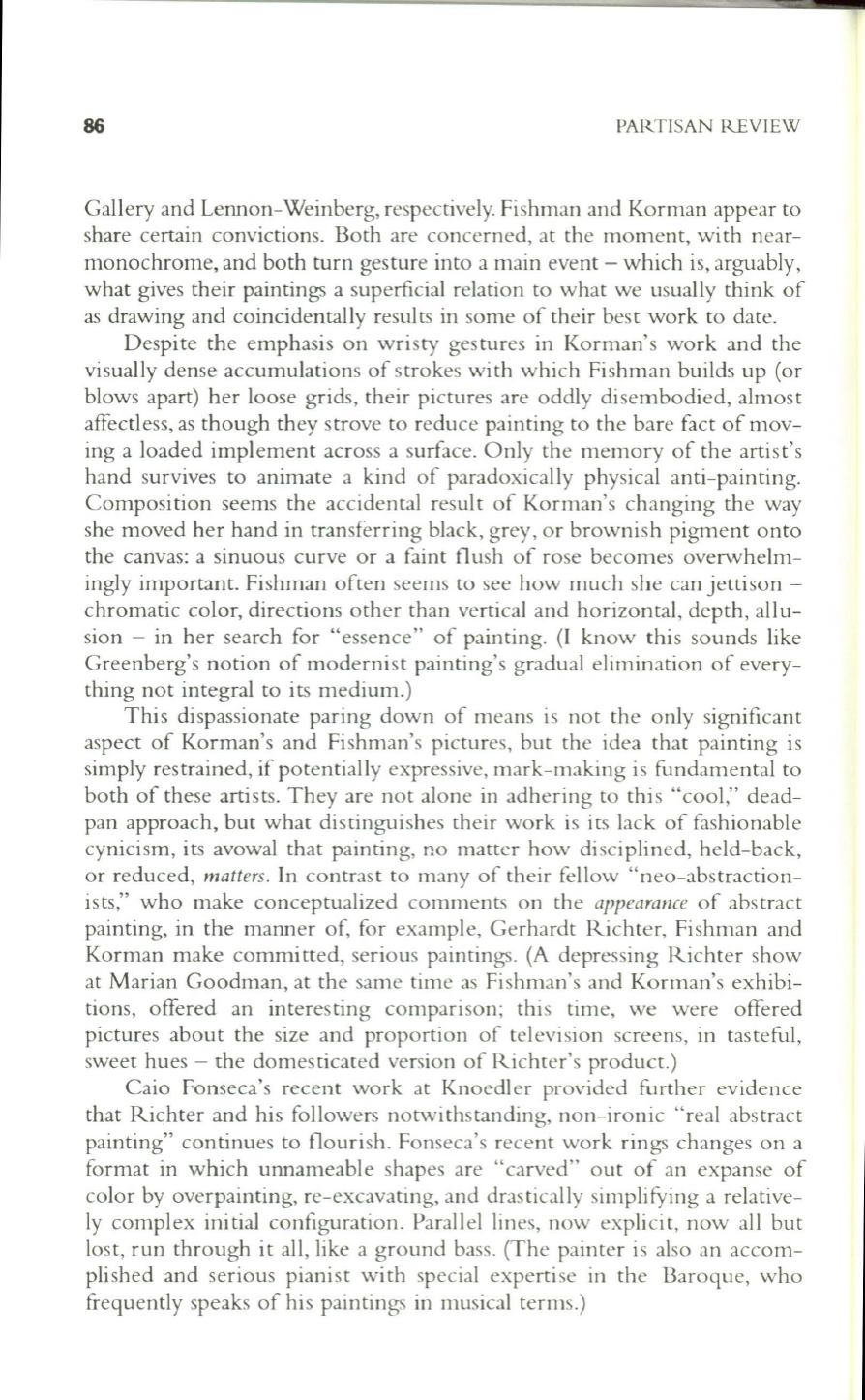
86
PARTISAN REVIEW
Gallery and Lennon-Weinberg, respectively. Fishman and Korman appear to
share certain convictions. Both are concerned, at the moment, with near–
monochrome, and both turn gesture into a main event - which is, arguably,
what gives their paintings a superficial relation to what we usually think of
as drawing and coincidentally results in some of their best work to date.
Despite the emphasis on wristy gestures in Korman's work and the
visually dense accumulations of strokes wi th which Fishman builds up (or
blows apart) her loose grids, their pictures are oddly disembodied, almost
affectless, as though they strove to reduce painting to the bare fact of mov–
ing a loaded implement across a surface. Only the memory of the artist's
hand survives to animate a kind of paradoxically physical anti-painting.
Composition seems the accidental result of Korman's changing the way
she moved her hand in transferring black, grey, or brownish pigment onto
the canvas: a sinuous curve or a faint flush of rose becomes overwhelm–
ingly important. Fishman often seems to see how much she can jettison -
chromatic color, directions other than vertical and horizontal, depth, allu–
sion - in her search for "essence" of painting. (I know this sounds like
Greenberg's notion of modernist painting's gradual elimination of every–
thing not integral to its medium.)
This dispassionate paring down of means is not the only significant
aspect of Korman's and Fishman's pictures, but the idea that painting is
simply restrained, if potentially expressive, mark-making is fundamental
to
both of these artists. They are not alone in adhering to this "cool," dead–
pan approach, but what distinguishes their work is its lack of fashionable
cynicism, its avowal that painting, no matter how disciplined, held-back,
or reduced,
matters.
In
contrast to many of their fellow "neo-abstraction–
ists," who make conceptualized comments on the
appearance
of abstract
painting, in the manner of, for example, Gerhardt Richter, Fishman and
Korman make committed, serious paintings. (A depressing Richter show
at Marian Goodman, at the same time as Fishman's and Korman's exhibi–
tions, offered an interesting comparison; this time, we were offered
pictures about the size and proportion of television screens, in tasteful,
sweet hues - the domesticated version of Richter's product.)
Caio Fonseca's recent work at Knoedler provided further evidence
that Richter and his followers notwithstanding, non-ironic "real abstract
painting" continues to flourish. Fonseca's recent work rings changes on a
format in which unnameable shapes are "carved" out of an expanse of
color by overpainting, re-excavating, and drastically simplifying a relative–
ly complex initial configuration. Parallel lines, now explicit, now all but
lost, run through it all, like a ground bass. (The painter is also an accom–
plished and serious pianist with special expertise in the Baroque, who
frequently speaks of his paintings in musical terms.)


